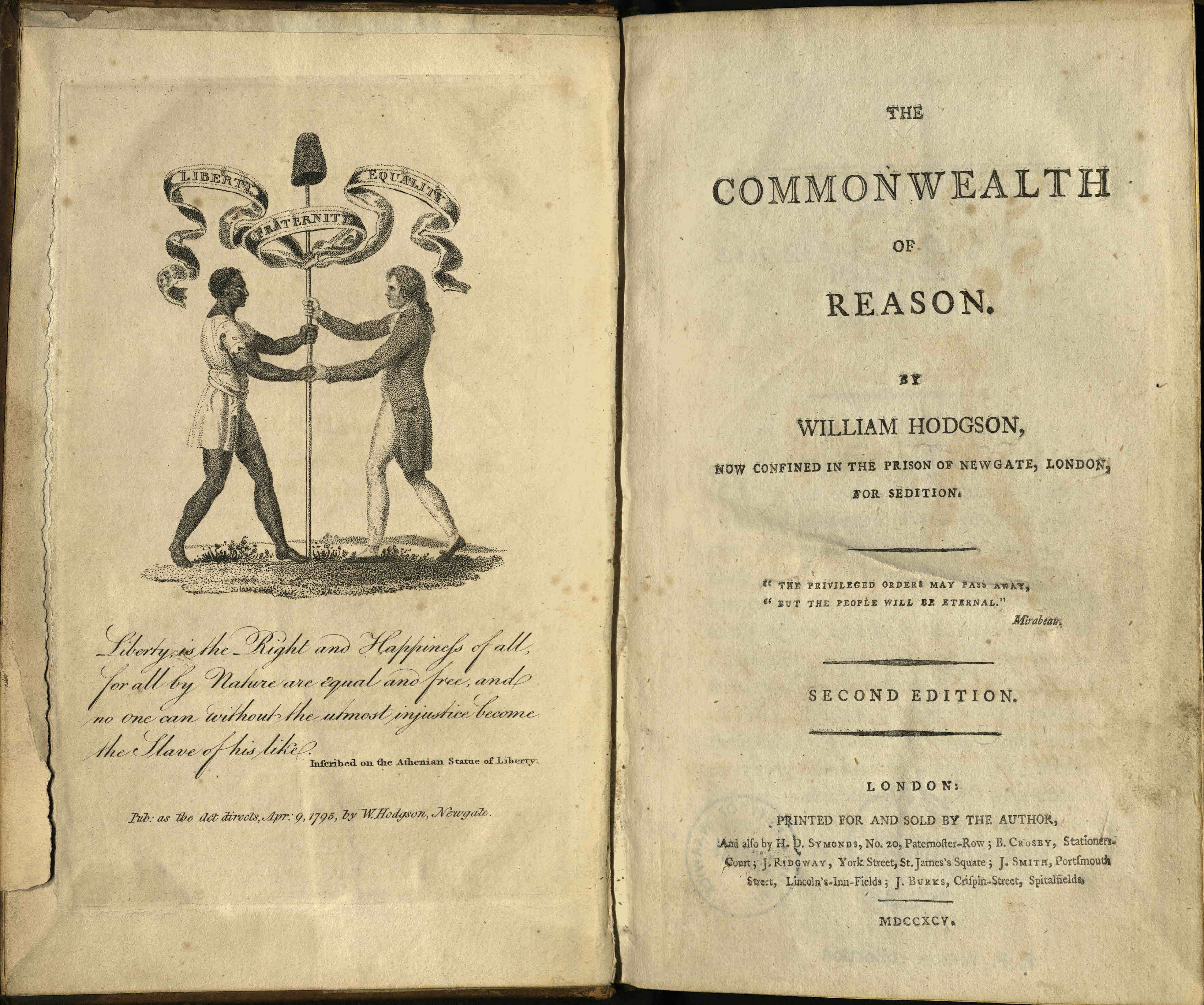The Commonwealth of Reason, 1795
Outline of William Hodgson's plan for “a Commonwealth, to be founded on the broad and durable basis of reason, liberty, fraternity, and equality”. This is the second edition, published towards the end of the author's two year prison sentence for sedition - the result of an argument over politics in a London coffee house in 1793. The book attacks the government, organised religion and the legal system as corrupt; declares 18 universal rights of men; and sets out Hodgson's highly utopian alternative plan for representative and executive government.
The engraving at the front of the book references both the French Revolution and the movement to abolish slavery, and shows two men - one black, the other white - facing each other. They are shown to be simultaneously holding hands and brandishing a pole with a liberty cap balanced on the top and a banner with an English translation of the French Revolutionary slogan 'Liberté, égalité, fraternité'. Despite the statement of equality the man on the right appears to have been portrayed as the dominant figure - he is smartly dressed and clasping the other man's hand.
The book is included in the University of Warwick Library Special Collections (reference: JB 1532 H63), and has been bound together with editions of Thomas Paine's 'The Age of Reason', part 1 (an early edition printed in 1795 by Daniel Isaac Eaton) and part 2 (a pirated first edition printed in 1795 by H.D. Symonds). Early publishers of 'The Age of Reason' were routinely prosecuted for sedition and blasphemy, and Thomas Paine's work became, in effect, a banned book - with no editions openly published in Britain between 1797-1818.

